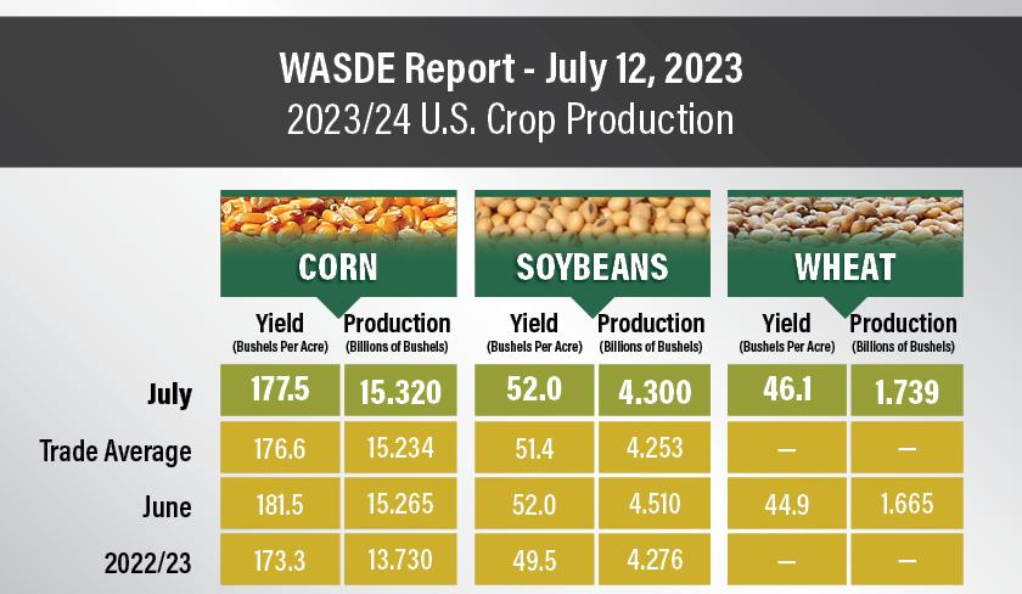Analyzing the July WASDE Report: A USDA Gift to Farmers?
The release of the July World Agricultural Supply and Demand Estimates (WASDE) report by the United States Department of Agriculture (USDA) is always eagerly awaited by farmers around the country. This report provides critical information on the current state of the agricultural market, including production and consumption estimates, and has a significant impact on the strategies and decisions made by farmers. In this article, we will analyze the key takeaways from the July WASDE report and examine its impact on farmers.

Key Takeaways from the July WASDE Report
The July WASDE report revealed several important insights that will shape the future of the agricultural industry. Firstly, the report projected a larger-than-expected corn and soybean crop for the current year. This news was welcomed by farmers, as it indicates a potentially higher supply and could lead to improved profitability. Additionally, the report disclosed a decrease in the estimated corn usage for ethanol production, which raised concerns among corn growers who heavily rely on this market segment.
Furthermore, the report highlighted the growing demand for wheat, primarily driven by increased export projections. This increased demand offers a promising opportunity for wheat farmers to capture higher prices. However, the report also noted challenges such as unfavorable weather conditions in key growing regions, which could potentially offset some of the positive projections.
Examining the Impact of USDA’s Latest Report on Farmers
The USDA’s July WASDE report has significant implications for farmers across the country. The projected increase in corn and soybean crops can be seen as a positive development, as it suggests a potential increase in supply and may lead to improved market conditions. Farmers who have invested in these crops will be cautiously optimistic about the projected profitability and may even consider expanding their operations to capitalize on the expected higher yields.
On the other hand, the decrease in corn usage for ethanol production could pose challenges for corn farmers who heavily rely on this market segment. This reduction in demand may lead to a surplus of corn in the market, resulting in lower prices. Farmers in this sector may need to explore alternative markets or adjust their production strategies to mitigate potential losses.
The increased demand for wheat, especially in the export market, presents an opportunity for wheat farmers to fetch higher prices and improve their profitability. However, the possible impact of adverse weather conditions on wheat production cannot be ignored. Farmers in wheat-growing regions should closely monitor the weather patterns and implement appropriate risk management strategies to minimize potential losses.
The July WASDE report released by the USDA provides valuable insights for farmers across the nation. While the projected increase in corn and soybean crops offers hope for improved profitability, the decrease in corn usage for ethanol production poses challenges for some farmers. The growing demand for wheat, on the other hand, presents an opportunity for higher prices, although adverse weather conditions could offset some of the benefits. As farmers navigate through these dynamics, staying informed and adapting their strategies accordingly will be crucial for maximizing their success in the agricultural market.
AllIn1Bitcoins works diligently to offer impartial and trustworthy data on cryptocurrency, finance, trading, and stocks. Nonetheless, we are unable to furnish financial counsel and encourage users to undertake their own inquiries and due diligence.












